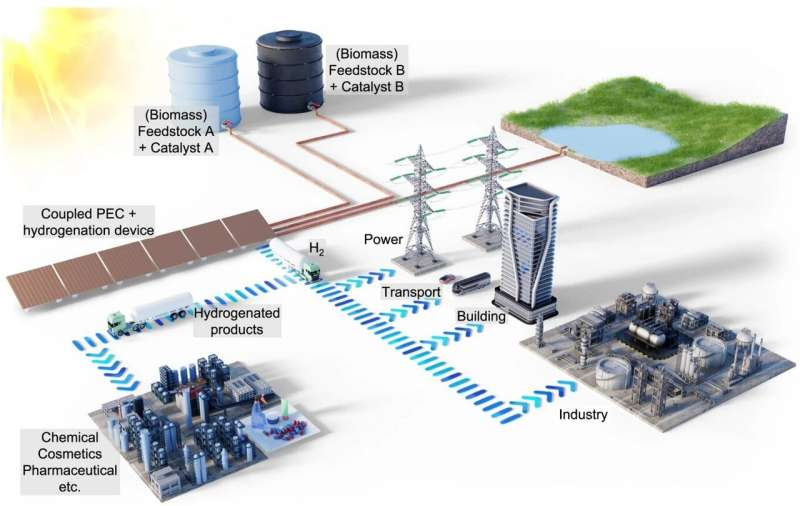The Co-production of Valuable Chemicals May Pave the Way for Green Hydrogen’s Economic Viability: Report
Plant becomes profitable from 11 percent hydrogen for MSA with a realistic overall PEC plant efficiency of 10 percent and taking into account primary costs as well as operation, maintenance and decommissioning, pure hydrogen production remains too expensive compared to production from fossil gas
A study by the Helmholtz-Zentrum Berlin (HZB) and the Technical University of Berlin shows how green hydrogen from sunlight can become profitable. As per the study, part of the hydrogen is used to upgrade raw biomass-derived chemicals into high-value chemicals for industry and this co-production concept is very flexible, as the same plant can be used to produce different by-products as required.
According to the report, in the energy system of the future, green hydrogen will play an important role in energy storage and as a renewable feedstock for the production of chemicals and materials for a wide range of applications.
At present, hydrogen is mainly produced from fossil natural gas (gray hydrogen). Green hydrogen, on the other hand, is produced via electrolysis of water using renewable energy. One promising approach is to use photoelectrochemical (PEC) devices to produce hydrogen using solar energy. However, hydrogen from PEC plants is much more expensive than hydrogen from (fossil) methane.
In the study, the research team describes how to control the chemical reactions in the PEC device by varying the process parameters and the concentration of the homogenous rhodium-based catalyst, which is water-soluble and already active at room temperature.
In this way, different proportions of hydrogen could be used for the hydrogenation of itaconic acid, selectively increasing or decreasing the production of methylsuccinic acid.
Plant becomes profitable from 11 per cent hydrogen for MSA with a realistic overall PEC plant efficiency of 10 per cent and taking into account primary costs as well as operation, maintenance and decommissioning, pure hydrogen production remains too expensive compared to production from fossil gas.
This is true even if the lifetime of the PEC plant is assumed to be 40 years, revealed the study.
This balance changes if the PEC reaction is coupled with the hydrogenation process. Even if only 11 per cent of the hydrogen produced is converted to MSA, the cost of hydrogen drops to 1.5 euro per kilogram, which is already at the same level as for hydrogen from methane steam reforming. And this is true even for a PEC plant lifetime of only 5 years.
As the market price of MSA is significantly higher than that of hydrogen, more MSA increases the profitability. In the experiment, between 11 and up to 60 per cent of the hydrogen could be selectively used to produce MSA.
In addition, a previous study has shown that co-production of MSA also reduces the so-called energy payback time, i.e. the time it takes for the plant to recover the energy that its production has consumed.
The PEC plant can also be used to produce other co-products by simply changing the feedstock and the (soluble) catalyst: for example, acetone could be hydrogenated to isopropanol.



































































































































































































































































































































































































































































































































































































































































































































































































































































































































































































































































































































































